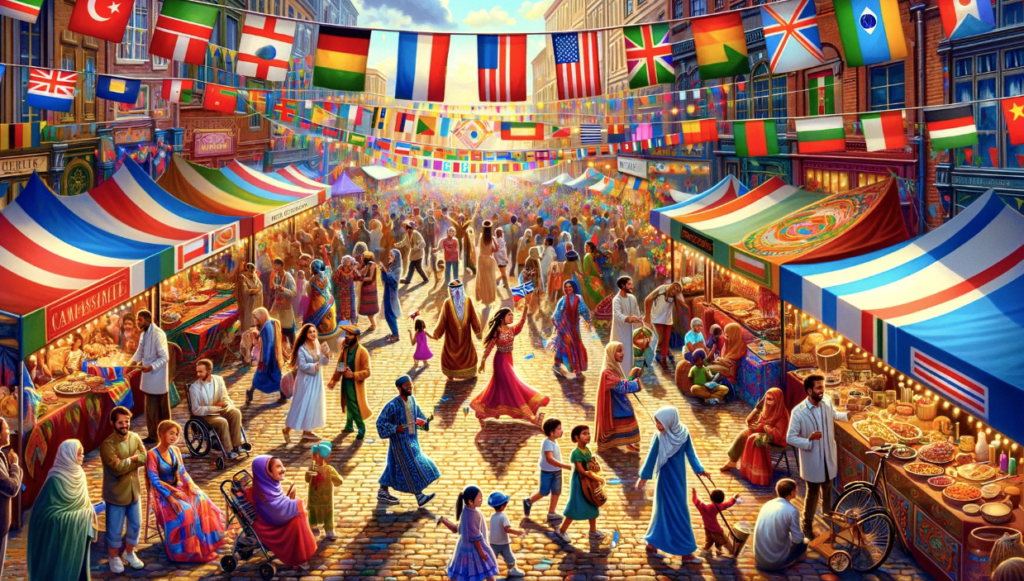Lesson 7. Cultural Diversity (文化的多様性)

▮ Explanatory Text:
Cultural diversity refers to the variety of cultural expressions, traditions, languages, and ways of life present within societies and across the globe. Embracing cultural diversity means acknowledging and valuing the differences among people while recognizing our common humanity. This concept is fundamental in promoting mutual understanding, respect, and collaboration among individuals from different backgrounds. Exploring cultural diversity can enhance creativity, foster innovation, and contribute to more inclusive societies. This topic invites learners to delve into the complexities of cultural diversity, its benefits, challenges, and its significance in the contemporary world.
▮ Common Phrases:
- Celebrating cultural differences involves…
- The challenges of cultural diversity include…
- Cross-cultural communication is key to…
- Inclusive societies can be fostered by…
- Understanding cultural diversity helps in…
▮ Example Sentences:
- Celebrating cultural differences involves learning about and participating in other cultural traditions.
- The challenges of cultural diversity include overcoming stereotypes and prejudice.
- Cross-cultural communication is key to building bridges between diverse communities.
- Inclusive societies can be fostered by policies that promote equality and access to opportunities for all.
- Understanding cultural diversity helps in creating more empathetic and open-minded communities.
▮ Questions:
- Why is cultural diversity important in today’s global society?
- This question encourages learners to consider the value of cultural diversity in fostering global understanding and cooperation.
- What are some effective ways to celebrate and promote cultural diversity within communities and workplaces?
- Participants explore practical strategies for enhancing cultural appreciation and inclusivity in various settings.
- How can individuals overcome challenges related to cultural diversity, such as stereotypes and language barriers?
- This prompts a discussion on overcoming common obstacles to cultural integration and mutual understanding.
- What role do education and media play in shaping our perceptions of cultural diversity?
- Learners examine the influence of education and media on attitudes towards cultural diversity and discuss ways to promote positive representation.
- Can you share an example of a cultural experience that broadened your understanding or appreciation of another culture?
- This question invites learners to reflect on personal experiences that have enhanced their appreciation for cultural diversity.
▮ Discussion Instructions:
Reflect on your own cultural background and another culture that interests you. Discuss the similarities and differences in values, traditions, and practices, and consider how these cultures can learn from each other. Think about how promoting cultural diversity can contribute to more harmonious and inclusive societies.







